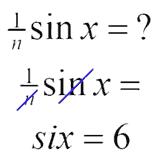Fighting Over Toilet Paper
Physics, Mathematics, and Knighthood
The mathematician Sir Rodger Penrose, knighted in 1994, is a recipient of the 1988 Wolf Prize for Physics for his work with Stephen W. Hawking. He is a professor at Oxford and the author of some well recieved popular science books about the physics behind human consciousness. He also developed Penrose tilings.
Quilted with Math
When Rodger Penrose's wife brought home some Kleenex toilet paper made by the British division of the Kimberly-Clark Corporation that appeared to be quilted with the same pattern Penrose had developed and patented back in the 1970s, he was a little less than pleased. The company explained that the quilted aperiodic pattern made it so that the toilet paper sat evenly on the roll.
Grout and Tile
To understand the groundbreaking importance of a Penrose tiling, first we must know what n-fold rotational symmetry is. An n-fold symmetry is when you can rotate an image around a point n times before you get back to the original, and the image looks the same as the original every time you rotate it. These n-fold symmetries are useful when tiling a surface.

It is very easy to tile a flat surface nicely with 4 equilateral triangles that have 3-fold symmetry. Likewise, you can have 4-fold symmetry with 4 squares, and 6-fold symmetry with 7 regular hexagons. Until the 1970s, it was thought that you couldn’t accomplish a tiling with 5-fold symmetry.
Penrose Tilings
Penrose discovered in 1974 that you could tile a flat surface with only two shapes and get 5-fold symmetry. Before, this feat was thought to be impossible.
 By drawing a five pointed star inside of a regular pentagram with sides length phi, you can pull out the resulting triangles and use them to create the basic pieces for making the two different Penrose tilings: the tiling with darts and kites, and the one with two rhombuses (flattened squares).
By drawing a five pointed star inside of a regular pentagram with sides length phi, you can pull out the resulting triangles and use them to create the basic pieces for making the two different Penrose tilings: the tiling with darts and kites, and the one with two rhombuses (flattened squares).
The intriguing part about these tilings is that they are aperiodic, which means that they never repeat. It is impossible to take a section of the tiling and repeat it to create the rest of the tiling.
Interestingly enough, the same sort of 5-fold symmetries occur in the 3rd dimension with quasicrystals. It was originally thought that crystals were either entirely symmetric being the same repeated pattern throughout, or entirely asymmetric. But in 1984, the first quasicrystals were observed in an aluminiun-manganese alloy (Al6Mn). When cross sections are taken of these crystals it reveals a two-dimensional Penrose tiling.
Legal Action!
Penrose and Pentaplex Ltd., who owns the licensing rights to Penrose's work, filed a lawsuit against the corporation for a breach of copyright.
"When it comes to the population of Great Britain being invited by a multinational to wipe their bottoms on what appears to be the work of a Knight of the Realm without his permission, then a last stand must be taken," maintained a director of Pentaplex.
Penrose dropped the lawsuit with Kimberly-Clark upon coming to a mutually beneficial arrangement.





